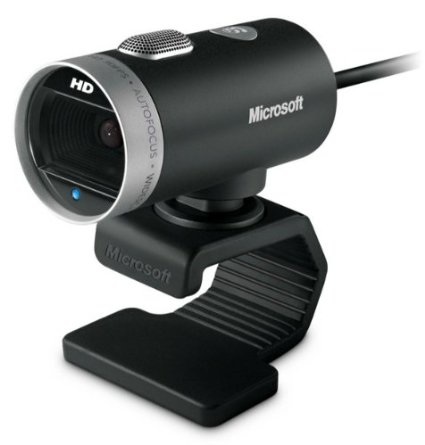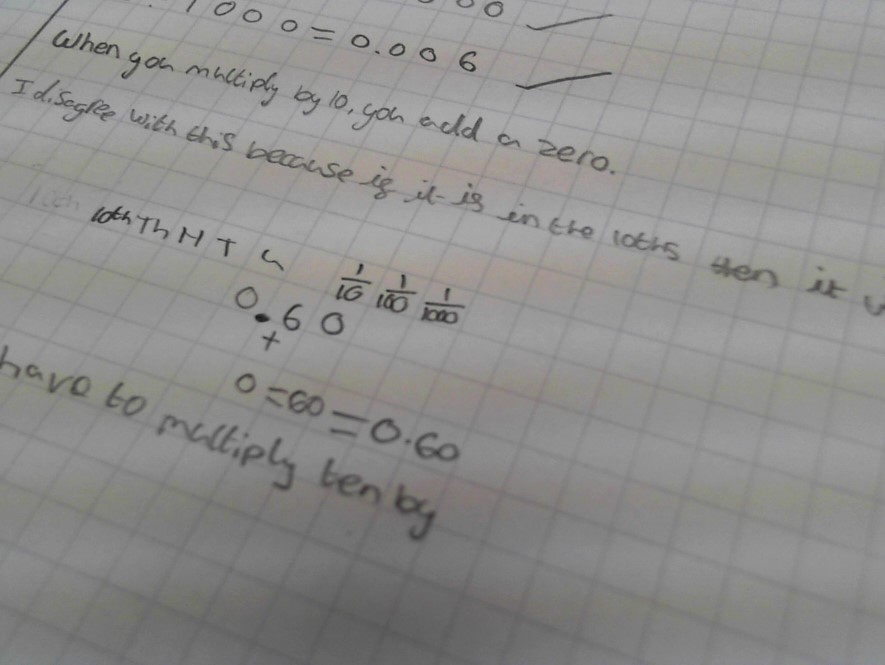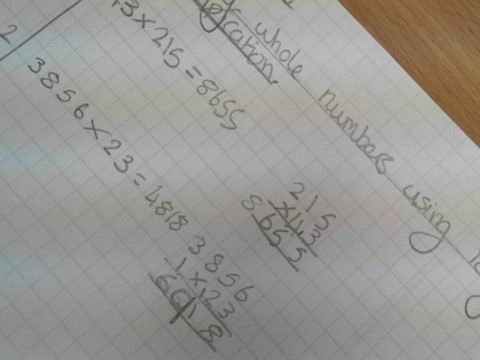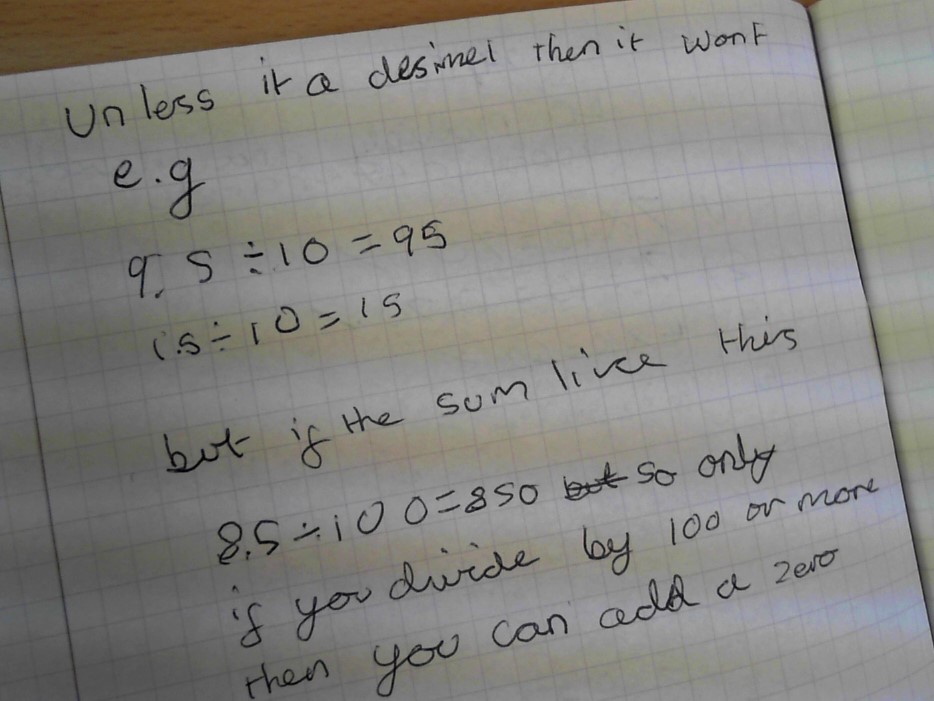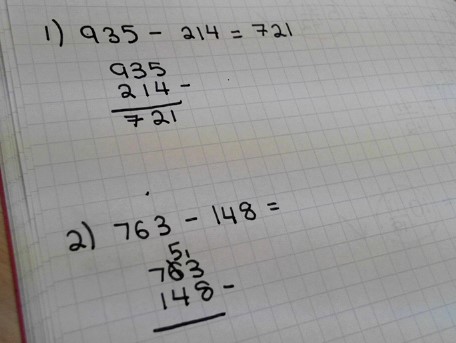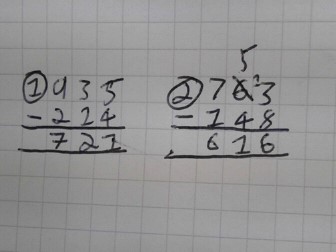As I mentioned in my blog about #mathsconf5, I’ve recently acquired a Microsoft LifeCam for my classroom and I’ve been playing with it rather a lot this past week. I need to take some photos of the setup in my classroom, but it’s basically a small portable plug-and-play webcam with accompanying software to take pictures, videos and audio. So far, I’ve only used it to take pictures during lessons, but even that has been incredibly powerful, and my pupils have shared some brilliant work and ideas.
Multiplying and dividing by powers of 10 – Year 7
Amy says “when you multiply by 10, you add a zero”. Is she correct? Explain.
At the end of a lesson about place value and multiplying/dividing by tens and hundreds with Year 7, I asked them to write a short response to the above question. You can get the resource here.
I usually get pupils to do this activity when we work on place value, as it exposes a lot of misconceptions. Being able to take pictures of pupils’ responses and immediately put them on the board meant that the discussion was much richer this time around.
Written multiplication methods – Year 7
These ones come from the same class – we did some work this week on multiplication methods. I asked them to tackle two multiplication problems using the methods they already knew (you can read about my approaches to multiplication methods here), then asked for pictures of their work, trying to capture all the different methods.
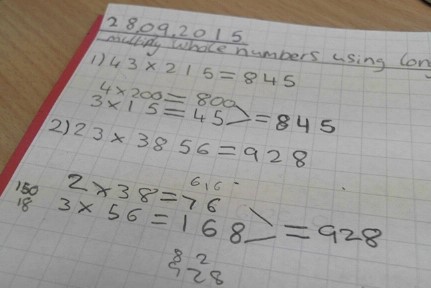
It was great to play spot the misconception with this one! 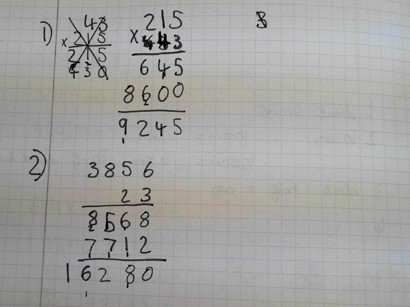
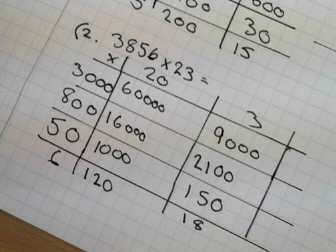
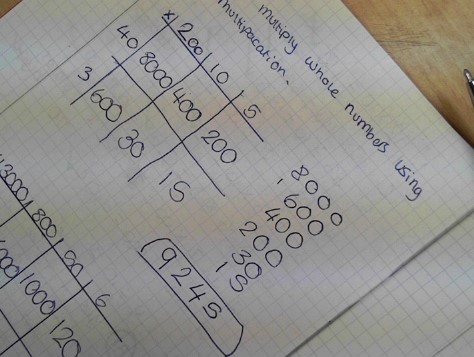
I also pulled an example of long multiplication and the grid method for the same question onto a PowerPoint slide pretty much instantly, then we annotated the similarities and differences between the methods, trying to “spot” one in the other.
Improper fractions and mixed numbers – Year 8
Reviewing improper fractions and mixed numbers using multi-link cubes with Year 8 seemed to cry out for using my LifeCam – I asked them to build models of 8/3 and 10/4 using the cubes, then we used the photographs to discuss the similarities and differences between each pupil’s model. I then used pictures of their models to illustrate a key point in today’s lesson about adding mixed numbers.
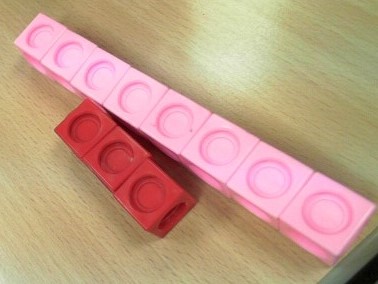
8/3 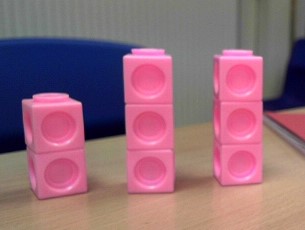
8/3 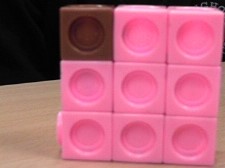
I thought this array representation was really interesting. 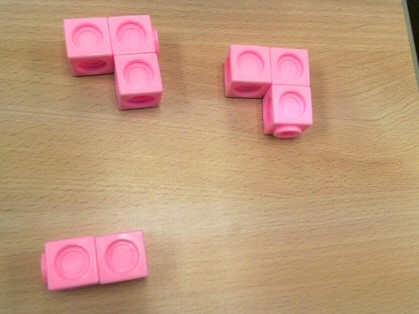
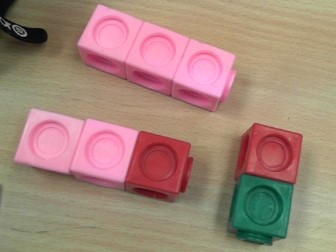
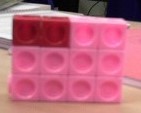
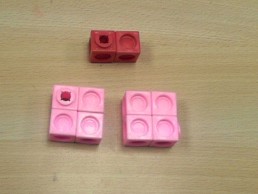
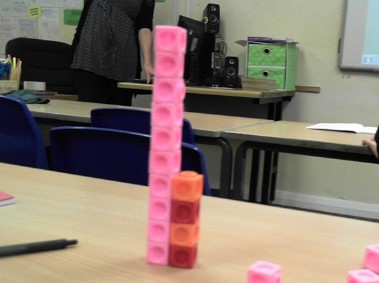
This is me trying to hold the cable really high in the air to avoid garroting pupils – a wireless camera would really be an ebi! 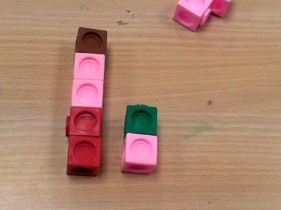
We had a great discussion about this pupil’s interpretation of 10/4 and how she’d arrived at her representation. 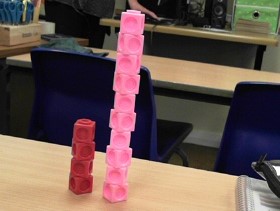
Subtraction using regrouping – Year 8
Finally, I decided to give subtraction of mixed numbers using regrouping a go, so I got the pupils to tackle some whole-number subtractions first, so we could discuss the strategies they’d used.
Another powerful feature that comes out of this is that pupils seem much more willing to check and correct their work when they see a peer’s solution than mine on the board. The pupil with the incorrect answer here quickly spotted what he’d done wrong and explained how to correct it to the class.
A couple of people asked me at #mathsconf if these were expensive; my response is I have no idea what we paid for the ones we have in school – it may be that they can be purchased more cheaply in bulk. The one I linked at the start is pretty reasonable (RRP about £45), particularly as the picture quality goes up to HD, the camera functions fairly well in very low light conditions, focuses quickly and is pretty “shake” resistant when taking pictures. I can’t comment on the audio or video specs currently, as I’ve not played with those yet, but watch this space!
